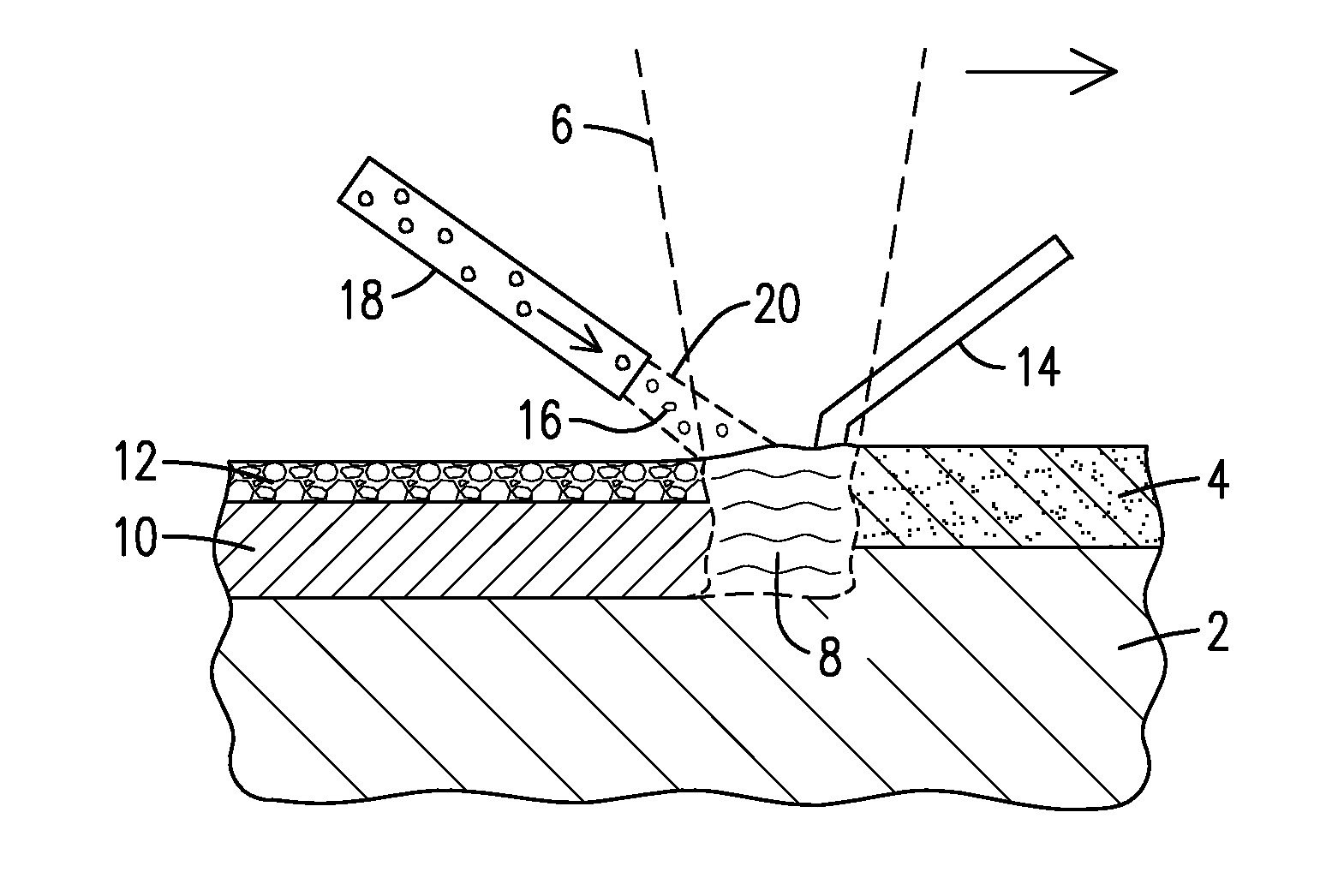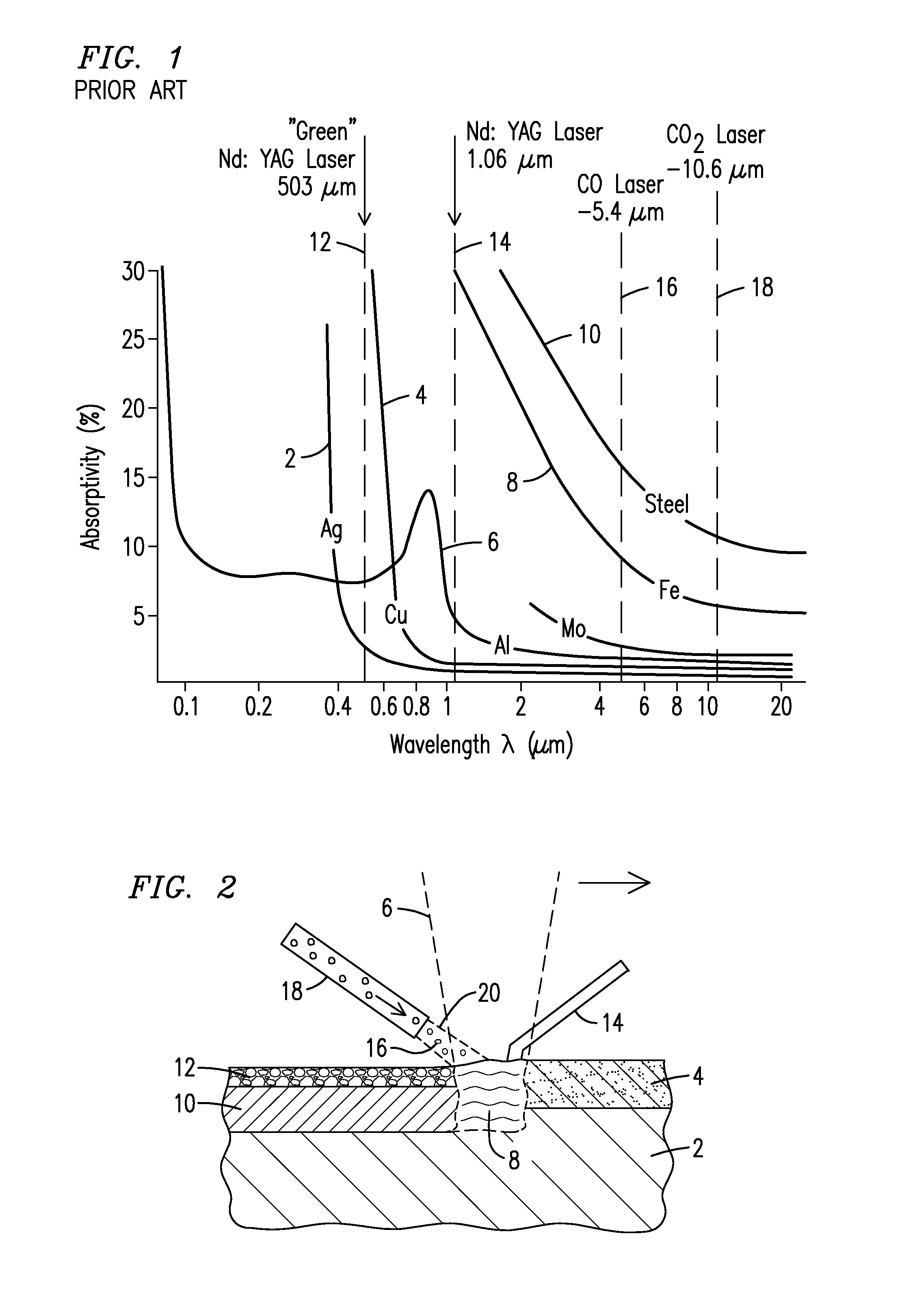Laser metalworking of reflective metals using flux
a technology of reflective metals and fluxes, applied in metal-working equipment, arc welding equipment, machines/engines, etc., can solve the problems of silver being an especially difficult metal, serious limitation on the use of laser heating for silver processing, and limited the effect of laser heat sour
- Summary
- Abstract
- Description
- Claims
- Application Information
AI Technical Summary
Benefits of technology
Problems solved by technology
Method used
Image
Examples
Embodiment Construction
[0012]The present Inventors have recognized that a need exists to discover methods and materials allowing reflective metals to be laser processed using a wider variety of laser sources than was previously possible. Ideal methods and materials would enable metals such as copper, aluminum and silver to be heated with laser energy and processed in a highly controllable manner using both lower power lasers (e.g., 503 nm and 1.06 μm Nd:YAG lasers) and higher power lasers (e.g., 1.06 μm ytterbium fiber, 5.4 μm CO and 10.6 μm CO2 lasers), to form metal products containing fewer chemical and mechanical imperfections. Such methods and materials would preferentially allow laser processing of reflective metals under atmospheric conditions enabling both small scale and large scale manufacturing and repair of metallic components having intricate structural features.
[0013]The term “reflective metals” is used herein in a general sense to describe metals (e.g., copper, aluminum and silver) which ex...
PUM
| Property | Measurement | Unit |
|---|---|---|
| thickness | aaaaa | aaaaa |
| diameter | aaaaa | aaaaa |
| wavelengths | aaaaa | aaaaa |
Abstract
Description
Claims
Application Information
 Login to View More
Login to View More - R&D
- Intellectual Property
- Life Sciences
- Materials
- Tech Scout
- Unparalleled Data Quality
- Higher Quality Content
- 60% Fewer Hallucinations
Browse by: Latest US Patents, China's latest patents, Technical Efficacy Thesaurus, Application Domain, Technology Topic, Popular Technical Reports.
© 2025 PatSnap. All rights reserved.Legal|Privacy policy|Modern Slavery Act Transparency Statement|Sitemap|About US| Contact US: help@patsnap.com



